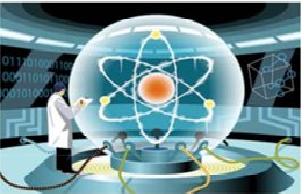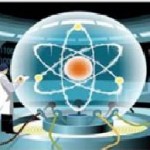
 Purdue University has been awarded $1.5 million to study quantum information science, a new field paving the way for quantum computing – a novel method to process information that is faster, more powerful and more efficient than classical computing.
Purdue University has been awarded $1.5 million to study quantum information science, a new field paving the way for quantum computing – a novel method to process information that is faster, more powerful and more efficient than classical computing.
The National Science Foundation-funded Center for Quantum Information and Computation for Chemistry will focus on the role of quantum information in chemical systems and on developing algorithms for chemical problems that can be solved efficiently using quantum computers.
Sabre Kais, the project’s principal investigator, said quantum information science draws on physical science, mathematics, computer science and engineering to understand how certain fundamental laws of physics can be harnessed to improve the acquisition, transmission and processing of information.
“The center will bring together experts in theoretical chemistry and quantum information processing to investigate information techniques used to gain new insights into a variety of chemical processes from bond breaking to photosynthesis,” said Kais, who is a professor of chemistry and a researcher in the Birck Nanotechnology Center. “This work will advance our understanding of chemical phenomena and could lead to the realization of quantum computers, which would be capable of performing complex calculations and simulations impossible on today’s computers.”
Quantum computing aims to use the behavior of atomic and subatomic particles like electrons, protons and photons to create a new way to store and process information. These particles would be turned into quantum bits, or qubits for computing.
While classical computers use transistors that are either “on” or “off” to represent a 1 or 0, qubits offer a third option of being both 1 and 0 at the same time to exponentially increase the number of calculations a computer can run simultaneously.
These particles also have the ability to be put into a state of entanglement, where a change applied to one is instantly reflected by the others, which offers the potential for massive parallel processing.
In the field of chemistry there are calculations that cannot be done through classical computing because it would take years for the computer to run through and evaluate all of the possibilities, Kais said.
“For example, obtaining the exact electronic structure of complex molecules can require running through more than 100 quadrillion configurations,” he said. “This is an impossible task on any current computer. We hope to design a quantum algorithm that can be used on a quantum computer to solve this problem in a matter of minutes.”
The center also will develop new software tools for the scientific community and will serve as an educational resource through public lectures, new course development, distance education initiatives and K-12 classroom activities.
Partners in the Purdue-based center include Alan Aspuru-Guzik of Harvard University, Kenneth R. Brown of the Georgia Institute of Technology, Daniel A. Lidar of the University of Southern California and Peter J. Love of Haverford College.
The center is funded by the National Science Foundation Centers for Chemical Innovation Program, which supports research centers that can address major, long-term fundamental chemical research challenges that have a high probability of both producing transformative research and leading to innovations.



